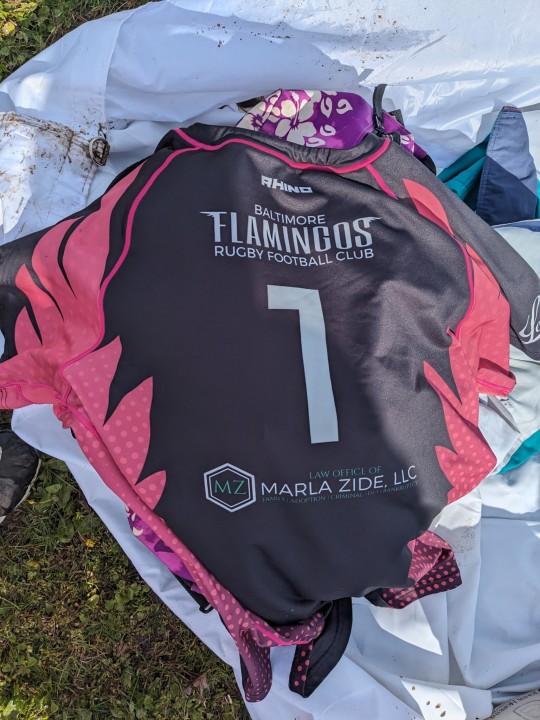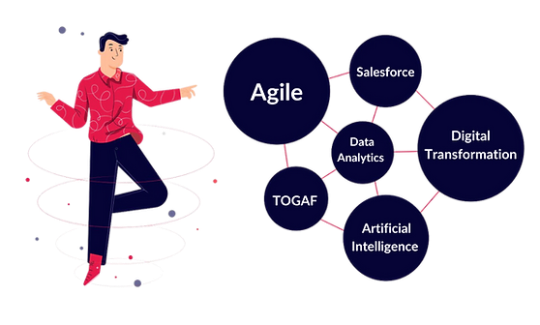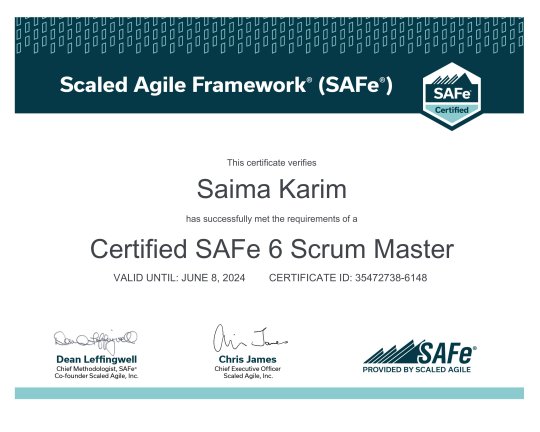#safe scrum
Explore tagged Tumblr posts
Text
SAFe POPM Training
Unlock the Power of Agile Leadership with SAFe POPM Training! Our SAFe Product Owner/Product Manager (POPM) training is your gateway to mastering Agile product management within the Scaled Agile Framework (SAFe). Join our expert-led, flexible online course to gain the skills and certification needed to excel in the dynamic world of product ownership. Enroll today and elevate your career as a SAFe POPM, all with the convenience of online training

0 notes
Text
god bless you rao's marinara for sensitive stomachs god bless you gf pasta made w corn and rice flour god bless you olive oil and god bless you salt. amen
#low fodmap#gluten free#handmadeorganicpost#cooking#scrum#tious#pasta was one of my autism safe food back in the day when i was learning how to use a stove#it still hits
19 notes
·
View notes
Text
Here's my submission for @razzledazzlerazzberry 's DTYIS >:)

I did it traditionally this time. :> Honestly, it doesn't come out as appealing but its generally easier for me to draw and express my style this way.
#razzledazzle2023dtiys#lust sans#human lust sans#sans au#dtiyschallenge#genderbend#i also did human ver. cause human lust sana is just so 🫡#scrum diddly yum yum a burr burr#suggestive?#i dunno but better safe than sorry#im on the marker level of Crayola right now so forgive me if it doesnt look all that great#imma get alcohol markers soon though 0_0#i also uses colored pencils. just saying
36 notes
·
View notes
Text
Played fuckin D1 rugby players today (we are D3 for the record) and for the entire 30 minutes I was on the field they did not score. Neither did we, mind, but while I was with the pack those fucks did not score and that's what matters.


#i landed in two inches of frigid standing water at least three times. did about twelve back to back scrums. dunno the tackle#number there were many. one dog pile that fucked my neck a bit because that blond bitch diagonal from me kept wrenching#i played with the starting pack and im very proud of everyone. i could have done better but I didn't go into it with the best headspace#had some good convo with coaches tho about the pack and our set up and tbh they felt i did solid for my game time so maybe its me#being hard on myself#got a lovely drunken ode of admiration from the fierce side captain which had me ready to cry#rest of my squad is out partying with the dc team. i am soaking these old bones and hoping they get home safe#im the sober dd as always this season#brunch at 11 tomorrow 🥂. Saturday is a Rugby really means your weekend is never your own lmao
12 notes
·
View notes
Text
SAFe Scrum Master Training: Elevate Your Agile Career
Introduction :-
In the rapidly evolving world of Agile methodologies, the role of a Scrum Master has become increasingly vital, especially within large organizations adopting the Scaled Agile Framework (SAFe). The SAFe Scrum Master (SSM) certification training is designed to equip professionals with the skills and knowledge necessary to thrive in this role. This blog explores the key components of SAFe Scrum Master training and how it can significantly enhance your career in Agile environments.
Understanding the SAFe Scrum Master Role
The SAFe Scrum Master acts as a servant leader and facilitator for Agile teams working within the SAFe framework. Unlike traditional Scrum Masters, those operating in a SAFe environment must navigate complexities associated with multiple teams and their interdependencies. The SSM training prepares individuals to effectively manage these dynamics, ensuring that teams can deliver value consistently.

Key Components of SAFe Scrum Master Training
Foundational Knowledge of SAFe
The training begins with an introduction to the Scaled Agile Framework, covering its principles, values, and practices. Participants gain insights into how SAFe integrates Lean thinking with Agile methodologies, providing a solid foundation for understanding their role within this framework.
Facilitating Team Events
A significant focus of the SSM training is on facilitating key team events such as sprint planning, daily stand-ups, sprint reviews, and retrospectives. Participants learn techniques to ensure these meetings are productive and engaging, fostering collaboration and communication among team members. Effective facilitation is crucial for maintaining momentum and driving continuous improvement.
Collaboration Across Teams
In a SAFe environment, collaboration among multiple Agile Release Trains (ARTs) is essential. The training emphasizes strategies for promoting cross-team collaboration, helping Scrum Masters coordinate efforts across various teams to achieve common goals. This collaborative mindset enhances overall productivity and ensures alignment with organizational objectives.
Conflict Resolution Skills
Conflict is inevitable in any team setting, but effective resolution is key to maintaining a healthy team dynamic. The SSM training equips participants with conflict resolution techniques that enable them to address issues constructively and foster a positive working environment. By developing these skills, Scrum Masters can help their teams navigate challenges more effectively.
Program Increment (PI) Planning
One of the critical aspects of SAFe is Program Increment (PI) planning, where teams align on objectives for a set period (typically 8-12 weeks). The SSM training prepares participants to facilitate PI planning sessions effectively, ensuring that all stakeholders are engaged and that teams have a clear understanding of their goals. This preparation is vital for successful delivery in a SAFe environment.
Continuous Improvement Mindset
The SAFe framework emphasizes continuous improvement through regular feedback loops and retrospectives. Participants learn how to instill this mindset within their teams by encouraging reflection on processes and outcomes. By fostering a culture of continuous improvement, Scrum Masters can drive innovation and enhance team performance.
Benefits of SAFe Scrum Master Certification
Career Advancement
Obtaining the SAFe Scrum Master certification opens doors to new career opportunities within Agile environments. Organizations increasingly seek certified professionals who can lead Agile transformations effectively, making this certification a valuable asset for career growth.
Increased Earning Potential When compared to their peers who are not qualified, professionals who hold SAFe certifications frequently fetch greater compensation. The specialized knowledge gained through SSM training enhances your marketability and positions you as a valuable asset to potential employers.
Networking Opportunities
Upon earning your certification, you join a global community of Agile practitioners and experts. This network provides valuable opportunities for collaboration, knowledge sharing, and professional development.
Conclusion
In summary, SAFe Scrum Master training equips professionals with essential skills needed to excel as Scrum Masters in Agile environments. From understanding the intricacies of the SAFe framework to facilitating team events, promoting collaboration, resolving conflicts, and driving continuous improvement, this training prepares individuals for success in their roles.
As organizations continue to embrace Agile methodologies in 2025 and beyond, investing in SAFe Scrum Master certification will be crucial for developing capable leaders who can guide their teams toward excellence in collaboration and performance while delivering exceptional value to customers. Whether you are new to Agile or looking to deepen your expertise, this certification offers invaluable insights into navigating the complexities of leading high-performing teams in today’s dynamic business landscape.
0 notes
Text
Achieve Sprint Goals Like a Pro!
Struggling to consistently hit your sprint objectives? Discover actionable strategies that align your team and enhance productivity. Learn to: ✅ Prioritize the product backlog ✅ Set measurable goals ✅ Adapt during sprint execution

Unlock the secrets to effective sprints and foster team collaboration!
📖 Read more: Strategies to Achieve Sprint Objectives Effectively
🎓 Ready to level up? Join our SAFe Scrum Master training and master Agile skills. Sign up here
#Agile #Scrum #SprintPlanning #SAFeScrumMaster #Productivity #Teamwork #AdvisedSkills
1 note
·
View note
Text
Using Agile methodology organizations aim to deliver high quality products and services quickly, with a strong focus on customer satisfaction. But how do teams ensure that every part of their workflow is efficiently contributing to value creation? The answer lies in understanding and optimizing value streams.
Value streams in Agile are a powerful concept that helps teams identify, map, and continuously improve the flow of work. By focusing on the value delivered to the customer, teams can eliminate bottlenecks, reduce waste, and improve both the speed and quality of delivery.
Let’s explore what value streams are, how they fit into Agile methodologies, and why they’re crucial for driving business agility.
#Agile#ValueStreams#LeanAgile#AgileDevelopment#ContinuousImprovement#EfficientDelivery#BusinessAgility#Scrum#Kanban#SAFe#AgileTeams#WorkflowOptimization#CustomerValue#Productivity#AgileTransformation
0 notes
Text
Elevating Agile Practices with SAFe® Advanced Scrum Master (SASM) Certification Training:
In today’s competitive environment, software development and project management are evolving with organizational specialized and effective methods such as the agile model. The scaled Agile Framework (SAFe®) deserves merit because of its effectiveness for the implementation of Agile in large organizations. For Scrum Masters who would like to enhance their knowledge, SAFe® Advanced Scrum Master (SASM) Certification Training will provide a great chance to improve expertise and support teams.
Defining the Advanced Scrum Master Role: In this way, the Advanced Scrum Master is a highly influential figure in any organizations’ transition to agile environments. Unlike basic Scrum Masters who occupy themselves with aspects at the team level, advanced Scrum Masters are trained to meet and overcome elaborated issues at the scaled level. Not only do they support team practices but also promote cooperation between the teams, orienting the work in direction of large goals of the organization.

Core Responsibilities of an Advanced Scrum Master:
Coaching and Development**: Professional Scrum Masters teach and coach their respective teams and other Scrum Masters to enhance learning.
Enhancing Collaboration**: To succeed, they ensure there are no barriers or divide between the teams so that the success of the project can be realized.
Identifying and Removing Impediments**: Ensuring that the patterns of performance are not hindered Advanced Scrum Masters manage StructuralFit situations and help to alleviate these obstacles to working effectively.
Promoting Advanced Agile Practices**: They helps teams to adopt Lean, Kanban, DevOps approaches thus enhancing value delivery flows performance.
Advantages of SASM Certification Training:
Agile Practices Awareness and Experience: Thus, participants will expand their knowledge of agile practices and become ready for the challenges of utilizing agile at the enterprise level.
Boosted Team Performance
It will help Scrum Masters to improve team productivity and overall quality of deliverables by mastering the latest coaching skills and collaboration frameworks introduced in the training.
Employment Related Benefits
It gives Scrum Masters and agile professionals opportunity to network and share their experiences with each other.
It provides the greatest potential for career enhancement since it clearly defines the organs of state power as separate from political party power.
SASM certification is significant as it proves professional’s enhanced knowledge of all agile practices and readiness to take a new position with increased responsibilities.
Experience Cumulated with Practice:
The training information includes simulations, cases, and role plays in which the participants are actively involved during the training.
What to Expect from the Training: Key topics covered during the training include: Appointing the Scrum Master in the Lean-Agile setting : The implementation of best practices for PI Planning : Organizational techniques for enhancing and sustaining motivated and effective team : Strategies for dealing with team weaknesses and improving communication
Conclusion: At the end of the training, the participants will sit for the SASM certification examination. All individuals who will successfully complete the exam will receive the SAFe® Advanced Scrum Master certificate, which will be an indication of their proficiency level. At a time when flexibility is critical for organizational performance, the SAFe® Advanced Scrum Master (SASM) Certification Training offers Scrum Masters a chance to advance their skills and make a difference. Thus, Advanced Scrum Masters are valuable in helping their teams improve by furthering their knowledge of elite level agile disciplines and improvement of team dynamics. Regardless of your goal – be it a higher profile in your career or creating a positive change in your company – SASM certification opens up new opportunities in your agile journey.
#safe advanced scrum master certification#safe advanced scrum master training#safe scrum master certification online#safe advanced scrum master course#safe 6 advanced scrum master
1 note
·
View note
Text
Maximizing Career Growth with Scrum Master Courses and SAFe Agile Framework Certification
In today’s fast-paced business environment, mastering agile methodologies has become essential for professionals looking to enhance their career prospects. Scrum master courses and SAFe Agile Framework certification are two pivotal qualifications that can significantly elevate your professional standing in the industry. Whether you are a budding project manager, an experienced IT professional, or someone looking to transition into the agile workspace, obtaining these certifications can provide you with a competitive edge. Understanding Scrum Master Courses
Scrum master courses are designed to teach professionals the fundamentals of the Scrum framework, which is a popular agile methodology used for managing and completing complex projects. These courses cover essential topics such as sprint planning, team collaboration, and backlog management. By enrolling in a scrum master course, you not only learn the theoretical aspects of Scrum but also gain practical insights through real-world case studies and projects. Moreover, scrum master courses are ideal for professionals who want to step into leadership roles within agile teams. As a Scrum Master, your primary responsibility is to facilitate the Scrum process, ensuring that your team follows the principles of Scrum while also protecting them from external distractions. The skills you gain from these courses will help you lead your team to success by fostering a culture of continuous improvement and high performance.
The Importance of SAFe Agile Framework Certification
While scrum master courses focus on team-level Scrum practices, the SAFe Agile Framework certification extends your knowledge to the enterprise level. The Scaled Agile Framework (SAFe) is designed to help organizations apply agile methodologies across multiple teams, departments, and even entire organizations. This framework is particularly beneficial for large enterprises that require a coordinated approach to agile implementation.
Obtaining a SAFe Agile Framework certification demonstrates your ability to scale agile practices beyond individual teams and into broader organizational structures. This certification is highly valued in industries that require synchronization across various agile teams, making it an essential credential for senior agile practitioners, program managers, and portfolio managers. By understanding the intricacies of SAFe, you can play a pivotal role in driving large-scale agile transformations within your organization.
Advancing with Leading SAFe Certification
The Leading SAFe certification is a specialized qualification that focuses on leading agile transformations within an organization. This certification is tailored for leaders who are responsible for guiding their teams through the implementation of the SAFe framework. The Leading SAFe certification equips you with the skills needed to effectively lead and manage multiple agile teams, ensuring that they work in harmony towards achieving the organization’s strategic goals.
This certification is particularly useful for senior managers, executives, and change agents who are tasked with driving agile adoption at an enterprise level. With a Leading SAFe certification, you gain a deep understanding of how to align agile practices with business objectives, foster collaboration across departments, and create an agile culture that supports continuous improvement.
Conclusion
In conclusion, scrum master courses, SAFe Agile Framework certification, and Leading SAFe certification are critical qualifications for professionals aiming to thrive in the agile landscape. These certifications not only enhance your technical expertise but also position you as a leader capable of driving agile transformation in your organization. Whether you’re looking to manage a single team or lead an entire enterprise, investing in these certifications will undoubtedly propel your career to new heights.
0 notes
Link
#quality.de#SAFeAgilist SAFe AgileMethoden AgileTransformation Scrum LeanAgile Schulung Weiterbildung ManagementTraining AgileLeadership Prozessoptimier
0 notes
Text
What benefit does Lean Portfolio Management Certification offer to individuals and organizations?
The Lean Portfolio Management Certification course is considered to be the most respected course in the industry. For individuals, it opens doors to higher-level job opportunities. This course shapes them to be eligible candidates to lead agile teams in a large organization with the necessary understanding of LPM principles and practices. And these courses are designed to support organizations with skilled workforce who understand the needs and goals of a company by taking strategic initiatives.

#agile#scrum master#advance agility#Lean Portfolio Management#LPM Training#LPM Certification#certification#SAFe Training#Agile#agile methodology#agile development
0 notes
Text

0 notes
Text
The Path to Becoming a Certified SAFe Scrum Master
0 notes
Text
Certified SAFe 6 Scrum Master

View On WordPress
0 notes
Text
What are the key areas of competency for a SAFe Advanced Scrum Master?
As the Scaled Agile Framework (SAFe) continues to gain traction in the world of project management, the role of the Advanced Scrum Master has become increasingly important. A SAFe Advanced Scrum Master (SASM) is a seasoned Scrum Master professional responsible for improving team results and driving successful Agile transformations within organizations. In this blog post, we'll explore the key areas of competency that define a proficient SASM . And improve key areas and skills with safe advanced scrum master training
Identifying and Solving Team Anti-Patterns
One of the primary responsibilities of a SASM is to identify and address team anti-patterns that hinder progress and collaboration. This involves observing team dynamics, recognizing dysfunctional behaviors, and implementing strategies to overcome these challenges. A SASM must possess strong problem-solving skills and the ability to facilitate difficult conversations to help teams overcome obstacles and achieve their goals.
Improving Value Flow using Kanban and Engineering Practices
Effective value delivery is crucial in Agile environments, and a SASM must understand how to optimize the flow of value using Kanban and engineering practices. This includes implementing Kanban systems to visualize and manage work, identifying and eliminating bottlenecks, and promoting the adoption of scalable engineering practices such as continuous integration and continuous deployment.

Supporting Program-Level Execution
In a SAFe context, a SASM must be able to support the execution of Agile Release Trains (ARTs) at the program level. This involves facilitating key events like PI Planning, System Demos, and Inspect and Adapt workshops. A SASM must possess strong facilitation skills and the ability to foster collaboration among multiple teams to ensure successful program execution.
Applying Problem-Solving and Advanced Coaching Techniques
A SASM must be adept at using problem-solving and advanced coaching techniques to drive relentless improvement within teams and the organization as a whole. This includes employing techniques such as root cause analysis, experimentation, and continuous learning to help teams identify and address underlying issues. A SASM must also be skilled in coaching and mentoring team members to help them grow and develop their skills.
Building an Environment of Constant Improvement
Continuous improvement is a core tenet of SAFe, and a SASM must be able to foster a culture of relentless improvement within teams and the organization. This involves promoting a growth mindset, encouraging experimentation and learning from failures, and creating an environment where teams feel empowered to continuously improve their processes and practices.
Adapting to Remote and Distributed Environments
In today's increasingly remote and distributed work landscape, a SASM must be able to effectively lead and support teams in these environments. This requires adapting facilitation techniques, fostering virtual collaboration, and ensuring that teams remain aligned and engaged despite physical distance.
Conclusion
The SAFe Advanced Scrum Master certification is a valuable asset for experienced Scrum Masters looking to take their skills to the next level and drive successful Agile transformations. By mastering the key areas of competency outlined above, a SASM can help teams and organizations achieve their goals, deliver value to customers, and continuously improve their processes and practices. If you're a Scrum Master looking to advance your career and make a greater impact, consider pursuing the SASM certification today.
0 notes
Text
More Great Agile Debates, Part 2

In the second part of my new blog series on "Agile's Great Debates," I cover another set of five topics that people tend to argue about when it comes to agile ways of working. Here they are: - SAFe is an Agile Framework - You Should Show “Not Done” Work at the Sprint Review - The Sprint Review is a Status Update - Agile is the same thing as Scrum - The Sprint Review and Retrospective are the Same
SAFe is an Agile Framework
I know I’ll probably get a few haters when I say this, but NO!, I don’t view SAFe as an agile framework. It’s a bloated, complicated (and bastardized) way of trying to accomplish large and overly complex, integrated work. (Seriously, visit their site and you will instantly see what a mess it is.) As an agile consultant, my recommendation is usually to avoid scaling if at all possible. By attempting to scale, you increase cost and complexity, and the risk of failure is much higher. It’s highly preferable to keep atomic and autonomous agile teams that are small and focused.

However, if you feel you must scale, there are (in my humble opinion), far better options than SAFe. These include Less and my scaled agile framework of choice: Nexus (which was created by the same people who wrote The Scrum Guide).
You Should Show “Not Done” Work at the Sprint Review
Uh, duh – NO! This is a cardinal rule of Scrum. Every team must have an agreed-upon Definition of Done, which is an official artifact in Scrum. And if an item does not meet this definition, it is not “Done,” and therefore should not be shared in a Sprint Review. Unfortunately, there are many Scrum Teams that struggle with this. First off, many lack a Definition of Done, and without one, how does anyone know what “done” looks like? Short answer: they don’t! This means that stories can linger and change, because nobody knows where the boundaries are.

Teams may also be tempted to show things that are “mostly” baked. This usually means that the coding has been done and it’s been passed off to QA for testing, but testing is in progress and hasn’t been completed. Some Scrum Teams cheat to get around this irritating problem by adjusting their Definition of Done so it doesn’t include “QA tests passed without any critical- or high-severity defects.” Try not to be this team. Having a tested, working, useable, demonstratable, and potentially-releasable working increment is the whole point of each Sprint!
The Sprint Review is a Status Update
Honestly, this is one of my biggest pet peeves when it comes to agile and Scrum! NO! The Sprint Review is not merely a status update or a demo; this event should be much more than that (and it should replace the dreaded “Status Review Meeting”). The point of the Sprint Review, according to The Scrum Guide is to: “Inspect the outcome of the Sprint and determine future iterations.” Yes, you should show your actual, working increment(s). This should not be a facsimile or a PowerPoint. Not only that, but the Developers should lead this event. They did the hard work of building the backlog items, and they deserve to get the recognition and credit that comes along with delivering. The second, and very important part, of the Sprint Review is to come up with a plan for future iterations. In my experience, the Product Owner has a general idea of what is wanted in the next Sprint or two, and shares this plan with the audience. However, based on stakeholder feedback, that tentative plan may change to accommodate new user requests. At the end of the Sprint Review, the expected outcome is an updated Product Backlog that serves as the input to the next Spring Planning event.
Agile is the same thing as Scrum
There is a widespread and common misunderstanding between agile and Scrum. This occurs because the Scrum Framework is far and away the most popular of agile approaches, but it’s definitely not the only one. Nor is agile synonymous with Scrum. The way I describe this concept when training new Scrum Teams is that agile is a mindset, an umbrella that covers all the various aspects of different agile approaches. All the different “flavors” of agile, therefore, are agile, but they are not agile itself.

To better understand what agile is, the best resource (in my humble opinion) is the original Agile Manifesto, which was famously penned by a group of frustrated software developers who met in Park City, Utah, at a ski resort in my wonderful home state of Utah in 2001. My first child was born the same year, making the document 22 years old, which is relatively new in the grand scheme of technology. In the Agile Manifesto, there are things that are valued more than others (which is not to say the other things don’t have any value). It also includes 12 core principles. Although agile has evolved past software development, the same ideas still apply to other contexts.
The Sprint Review and Retro are the Same
As an agile trainer and coach (Scrum specifically), I have seen that the two Scrum events that are most often confused, are the Sprint Review and Sprint Retrospective. I don’t quite understand why there is so much confusion, but my experience has proved it time and time again. To clarify, NO, these two events are not the same thing. Each has its own purpose and audience, along with expected outcomes. The goal of the Sprint Review is to: “Inspect the outcome of the Sprint and determine future iterations.” In contrast with the Sprint Review, the Sprint Retrospective is only for the Scrum Team, without any outside or extra participants (including managers). The point of this event is to embrace the empirical process of inspecting and adapting. It allows the team to honestly look back at the Sprint and identify opportunities for improvement. So, as you can see – the Sprint Review and Retrospective are two totally separate events, with totally different purposes. I hope this clears up any confusion!
Final Thoughts
This blog covered five more ways agile concepts and practices are misunderstood. To recap: try not to scale if you can avoid it, make sure your team has a Definition of Done, only show "done" work at the Sprint Review, which is a separate event with a different purpose than the Retrospective. Finally, agile is a mindset - Scrum is an agile framework. Now, as always - it's your turn! What do you think about these debate topics? Do you have any differing opinions or experiences? If so, I would love to hear about them in the comments below! Oh, and P.S. - if you missed the first blog in this series, you can find it here: - Part 1 - Devs as Sub-team, the 3 questions, product goal, refinement, hybrids Check back for more great debates soon! Read the full article
0 notes